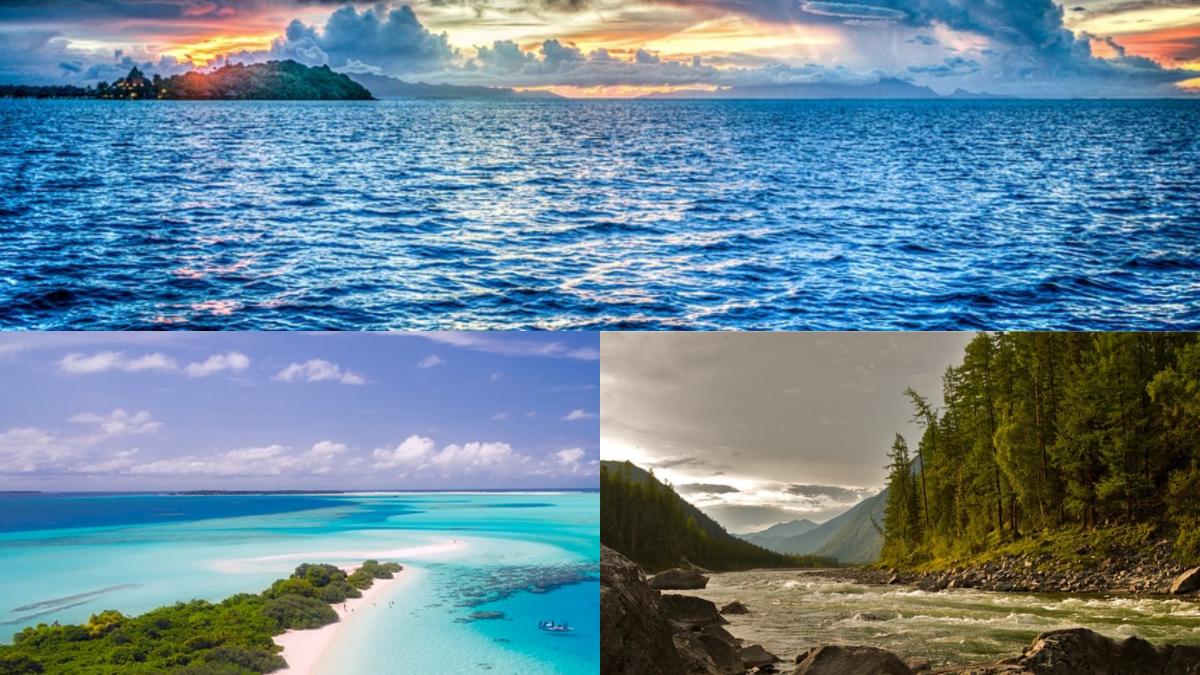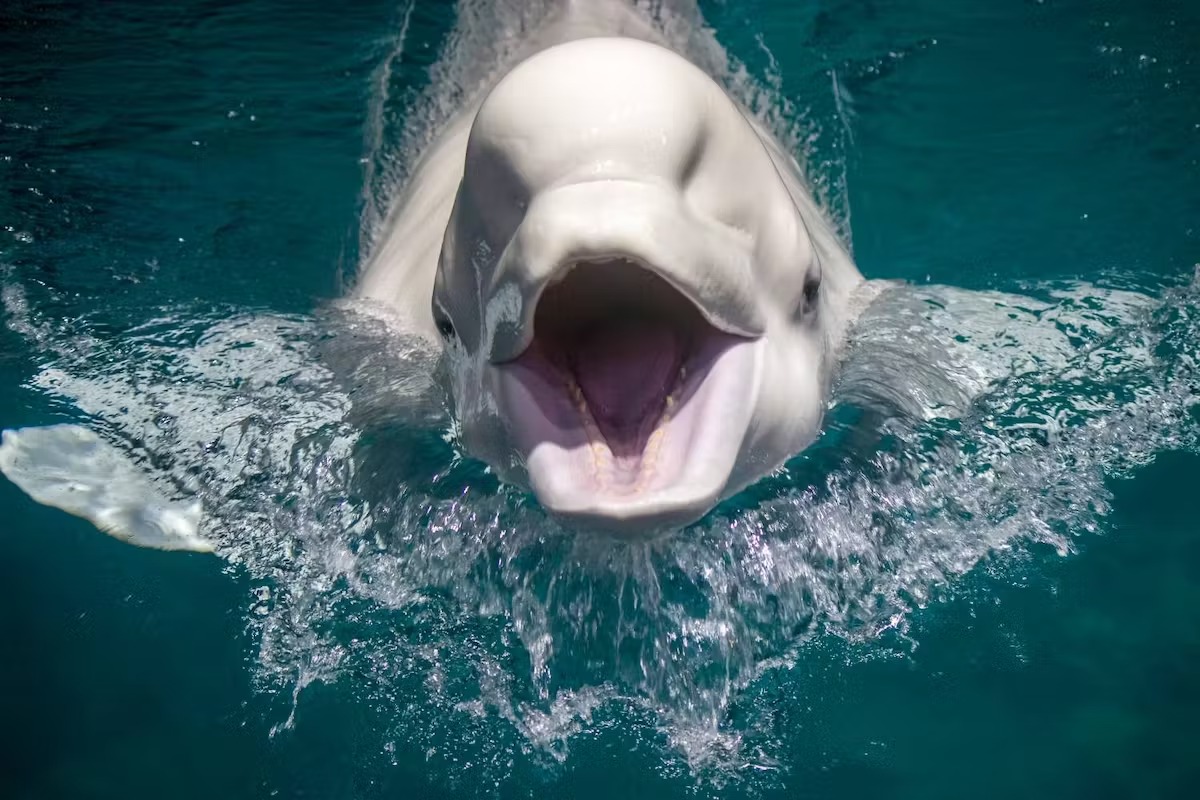Home>Education>The Ultimate Guide To Understanding Lakes, Seas, And Oceans


Education
The Ultimate Guide To Understanding Lakes, Seas, And Oceans
Published: January 18, 2024
Discover the ultimate guide to lakes, seas, and oceans with our comprehensive educational resource. Learn about the fascinating world of aquatic ecosystems and marine life. Unlock the secrets of Earth's vast bodies of water today!
(Many of the links in this article redirect to a specific reviewed product. Your purchase of these products through affiliate links helps to generate commission for Noodls.com, at no extra cost. Learn more)
Table of Contents
Introduction
Lakes, seas, and oceans are awe-inspiring bodies of water that cover the Earth's surface, playing a pivotal role in shaping the planet's landscape and sustaining life. These vast expanses of water hold an undeniable allure, captivating the human imagination with their sheer size, mysterious depths, and the myriad forms of life they harbor. Understanding the unique characteristics and ecological significance of these water bodies is essential for appreciating their profound impact on the environment and human civilization.
Lakes, typically freshwater bodies, vary widely in size, from small ponds nestled in serene woodlands to expansive, glacier-carved lakes that resemble inland seas. These tranquil reservoirs serve as vital water sources for countless communities, supporting diverse ecosystems and providing scenic landscapes for recreational activities. Seas, on the other hand, are saltwater bodies that connect to the world's oceans. They are often bordered by land and are home to a rich array of marine life, offering valuable resources for fishing and trade. Oceans, the largest bodies of water on Earth, encompass vast expanses of saltwater, exerting a profound influence on global climate patterns and supporting an astonishing diversity of marine species.
In this comprehensive guide, we will delve into the formation, characteristics, ecosystems, biodiversity, human impact, and conservation efforts related to lakes, seas, and oceans. By exploring these topics, we aim to unravel the intricate tapestry of these aquatic wonders, shedding light on their ecological importance and the urgent need to preserve their delicate balance. Join us on a journey through the depths of these aquatic realms, where we will uncover the astonishing beauty and complexity that define lakes, seas, and oceans.
The exploration of lakes, seas, and oceans is a gateway to understanding the intricate web of life on our planet and the profound influence of these water bodies on the environment. As we embark on this enlightening journey, let us embrace the wonder and significance of these aquatic realms, fostering a deep appreciation for their irreplaceable role in sustaining life on Earth.
What Are Lakes, Seas, and Oceans?
Lakes, seas, and oceans are vast expanses of water that play pivotal roles in shaping the Earth's geography and sustaining diverse ecosystems. Lakes are inland bodies of water, varying in size and depth, and are predominantly freshwater reservoirs. They are formed through a variety of geological processes, such as tectonic activity, glacial movements, and volcanic eruptions. Lakes serve as essential sources of freshwater for drinking, irrigation, and industrial use, supporting a myriad of plant and animal species within their ecosystems.
Seas, unlike lakes, are saltwater bodies that connect to the world's oceans. Bordered by land, seas are vital conduits for maritime trade and transportation, serving as gateways to various coastal regions. They are home to a rich diversity of marine life, including fish, crustaceans, and marine mammals, and contribute significantly to global fisheries and aquaculture. The interconnected nature of seas facilitates the exchange of nutrients and marine species between different regions, playing a crucial role in maintaining the ecological balance of the oceans.
Oceans, the largest bodies of water on Earth, cover approximately 71% of the planet's surface and are primarily composed of saltwater. They are divided into five major basins: the Pacific, Atlantic, Indian, Southern (Antarctic), and Arctic Oceans. Oceans are dynamic and complex ecosystems, influencing global weather patterns, regulating climate, and supporting a staggering array of marine life. From microscopic phytoplankton to majestic whales, oceans harbor an unparalleled diversity of species, making them vital to the overall health of the planet.
In summary, lakes, seas, and oceans are distinct yet interconnected water bodies that contribute significantly to the Earth's ecological balance and the well-being of countless species, including humans. Understanding their unique characteristics and ecological significance is crucial for appreciating their profound impact on the environment and human civilization.
Formation and Characteristics
Lakes, seas, and oceans are the result of diverse geological processes that have shaped the Earth's surface over millions of years, giving rise to unique features and characteristics that define each water body.
Lakes
Formation:
Lakes are formed through various geological processes, including tectonic activity, glacial erosion, volcanic activity, and the accumulation of rainwater in depressions. Tectonic forces can create natural basins, which become reservoirs for water, while glacial movements carve out bowl-shaped hollows that fill with meltwater, forming glacial lakes. Volcanic activity can lead to the formation of crater lakes, as seen in volcanic calderas. Additionally, rainfall and runoff can collect in low-lying areas, creating small ponds and lakes.
Characteristics:
Lakes exhibit diverse characteristics based on their formation and location. They vary in size, depth, and water quality, with some lakes being shallow and nutrient-rich, while others are deep and oligotrophic. The presence of islands, peninsulas, and inlets further adds to the unique features of individual lakes. Additionally, the surrounding landscape, including forests, mountains, and wetlands, contributes to the scenic beauty and ecological diversity of lakes.
Seas
Formation:
Seas are primarily formed through the process of continental drift and the flooding of low-lying coastal areas. As tectonic plates shift and separate, they create basins that fill with seawater, forming expansive seas. The rising sea levels during interglacial periods have also contributed to the formation of seas by inundating coastal plains and river valleys.
Characteristics:
Seas are characterized by their connection to the world's oceans and their semi-enclosed nature, often bordered by landmasses and archipelagos. They exhibit a wide range of depths and salinity levels, influenced by factors such as evaporation, precipitation, and freshwater input from rivers. The diverse coastal topography, including beaches, cliffs, and coastal wetlands, contributes to the distinct characteristics of seas, providing habitats for a rich array of marine life.
Oceans
Formation:
Oceans are the result of the Earth's complex geological history, shaped by the movement of tectonic plates and the accumulation of water from various sources, including rainfall, rivers, and glacial meltwater. The formation of ocean basins, such as the Mid-Atlantic Ridge and the Pacific Ring of Fire, has played a crucial role in shaping the world's oceans.
Characteristics:
Oceans are characterized by their immense size, depth, and interconnectedness, influencing global climate patterns and the distribution of marine life. They exhibit distinct features, including continental shelves, abyssal plains, and oceanic trenches, reflecting the dynamic forces that have shaped their topography over millions of years. The circulation of ocean currents, driven by winds and temperature gradients, further contributes to the unique characteristics of individual ocean basins.
In summary, the formation and characteristics of lakes, seas, and oceans are a testament to the Earth's geological processes, showcasing the remarkable diversity and complexity of these aquatic ecosystems. Understanding the distinct features and formation mechanisms of these water bodies is essential for appreciating their ecological significance and the interconnectedness of the Earth's hydrosphere.
Ecosystems and Biodiversity
Ecosystems within lakes, seas, and oceans are teeming with an astonishing array of life forms, creating complex and interconnected webs of biodiversity. These aquatic environments support diverse habitats, from the tranquil shores of lakes to the vibrant coral reefs of tropical seas and the expansive open waters of the oceans. The biodiversity within these ecosystems encompasses a wide spectrum of species, ranging from microscopic plankton to apex predators, each playing a vital role in maintaining the ecological balance of their respective habitats.
Lakes
Lakes harbor a rich diversity of life, with their ecosystems comprising distinct zones, including the littoral zone, limnetic zone, and profundal zone. These zones support a myriad of species, including aquatic plants, fish, amphibians, and invertebrates. The shallow waters of the littoral zone provide crucial habitats for aquatic plants and nesting sites for birds, while the deeper limnetic and profundal zones host a variety of fish species and bottom-dwelling organisms. Lakes also exhibit seasonal variations, such as the formation of ice cover during winter, influencing the behavior and distribution of species within their ecosystems.
Seas
Seas are renowned for their vibrant and diverse ecosystems, characterized by coastal wetlands, mangrove forests, and coral reefs, among others. Coastal wetlands serve as vital nurseries for fish and provide habitats for migratory birds, while mangrove forests offer shelter and breeding grounds for numerous marine species. Coral reefs, often referred to as the "rainforests of the sea," support an unparalleled diversity of marine life, including colorful fish, invertebrates, and charismatic species such as sea turtles and reef sharks. The intricate symbiotic relationships within these ecosystems contribute to their resilience and productivity.
Oceans
Oceans encompass a staggering array of ecosystems, from the sunlit surface waters to the dark depths of the abyssal zone. The surface waters teem with phytoplankton, the foundation of marine food webs, which support a cascade of life, including zooplankton, fish, marine mammals, and seabirds. The pelagic zone hosts wide-ranging species, from migratory tuna to graceful marine mammals like dolphins and whales. Meanwhile, the deep-sea ecosystems, characterized by hydrothermal vents and cold seeps, harbor unique and often bizarre organisms adapted to extreme conditions, offering valuable insights into the resilience of life in the ocean's depths.
The biodiversity within lakes, seas, and oceans is a testament to the interconnectedness of life on Earth and the intricate relationships that sustain these diverse ecosystems. From the delicate balance of freshwater lakes to the vibrant tapestries of marine life in the seas and oceans, the biodiversity within these aquatic realms underscores the irreplaceable value of preserving these ecosystems for future generations.
Human Impact and Conservation
Human activities have exerted a profound impact on the delicate balance of lakes, seas, and oceans, posing significant challenges to the conservation of these vital ecosystems. The rapid expansion of urban areas, industrialization, agricultural runoff, and the discharge of pollutants have led to the degradation of water quality in lakes and coastal areas, threatening the health of aquatic species and the overall ecological integrity of these environments.
In lakes, human-induced eutrophication, resulting from the excessive input of nutrients from agricultural runoff and wastewater discharge, has led to algal blooms and oxygen depletion, disrupting the balance of aquatic ecosystems. Additionally, the construction of dams and water extraction for irrigation and industrial purposes has altered the natural flow regimes of rivers, impacting the hydrology of lakes and their associated habitats.
Coastal development and overfishing have significantly impacted sea ecosystems, leading to the loss of critical habitats such as mangrove forests and coral reefs. Pollution from land-based sources, including plastic debris, oil spills, and chemical contaminants, has further contributed to the degradation of coastal waters, posing threats to marine life and the livelihoods of coastal communities.
In oceans, human activities such as overfishing, destructive fishing practices, and the accumulation of plastic waste have jeopardized the health of marine ecosystems. The widespread impact of climate change, including ocean acidification and rising sea temperatures, has exacerbated the vulnerability of marine species and ecosystems, posing unprecedented challenges to their conservation.
Conservation efforts aimed at mitigating the human impact on lakes, seas, and oceans are crucial for safeguarding these invaluable ecosystems. Sustainable management practices, including the establishment of marine protected areas, the implementation of integrated watershed management plans for lakes, and the promotion of sustainable fishing practices, are essential for preserving the ecological integrity of aquatic environments.
Furthermore, public awareness campaigns and education initiatives play a pivotal role in fostering a deeper understanding of the interconnectedness of human activities and the health of aquatic ecosystems. Engaging local communities, stakeholders, and policymakers in conservation initiatives can lead to the implementation of effective measures to reduce pollution, protect critical habitats, and promote sustainable use of water resources.
The conservation of lakes, seas, and oceans is not only essential for preserving biodiversity and ecological balance but also for ensuring the well-being of human societies that depend on these vital water bodies for sustenance, livelihoods, and cultural heritage. By recognizing the intrinsic value of these aquatic ecosystems and embracing collective responsibility for their conservation, we can strive towards a sustainable future where the beauty and diversity of lakes, seas, and oceans thrive for generations to come.
Conclusion
In conclusion, the exploration of lakes, seas, and oceans unveils a profound tapestry of natural wonders, ecological intricacies, and the intricate interplay between human activities and the health of aquatic ecosystems. From the tranquil shores of freshwater lakes to the expansive realms of the world's oceans, these water bodies serve as vital sources of life, shaping the landscape, influencing climate patterns, and supporting an astonishing diversity of species.
The formation and characteristics of lakes, seas, and oceans reflect the dynamic forces of geological processes that have sculpted the Earth's surface over millennia. Understanding the distinct features and formation mechanisms of these water bodies is essential for appreciating their ecological significance and the interconnectedness of the Earth's hydrosphere. The ecosystems within these aquatic realms harbor an unparalleled diversity of life, from microscopic organisms to apex predators, underscoring the irreplaceable value of preserving these ecosystems for future generations.
However, the human impact on lakes, seas, and oceans has led to significant challenges in their conservation. Urbanization, industrialization, pollution, overfishing, and climate change have threatened the delicate balance of these vital ecosystems, necessitating urgent and concerted efforts to address these pressing issues. Sustainable management practices, conservation initiatives, and public awareness campaigns are crucial for mitigating the human impact and preserving the ecological integrity of lakes, seas, and oceans.
By recognizing the intrinsic value of these aquatic ecosystems and embracing collective responsibility for their conservation, we can strive towards a sustainable future where the beauty and diversity of lakes, seas, and oceans thrive for generations to come. The preservation of these invaluable water bodies is not only essential for safeguarding biodiversity and ecological balance but also for ensuring the well-being of human societies that depend on these vital resources for sustenance, livelihoods, and cultural heritage.
As we continue to deepen our understanding of lakes, seas, and oceans, it is imperative to foster a harmonious coexistence with these aquatic realms, honoring their significance and embracing stewardship to ensure their enduring vitality. Through collective action and a shared commitment to conservation, we can embark on a journey towards a future where the magnificence of lakes, seas, and oceans remains an enduring legacy for generations to cherish and protect.













